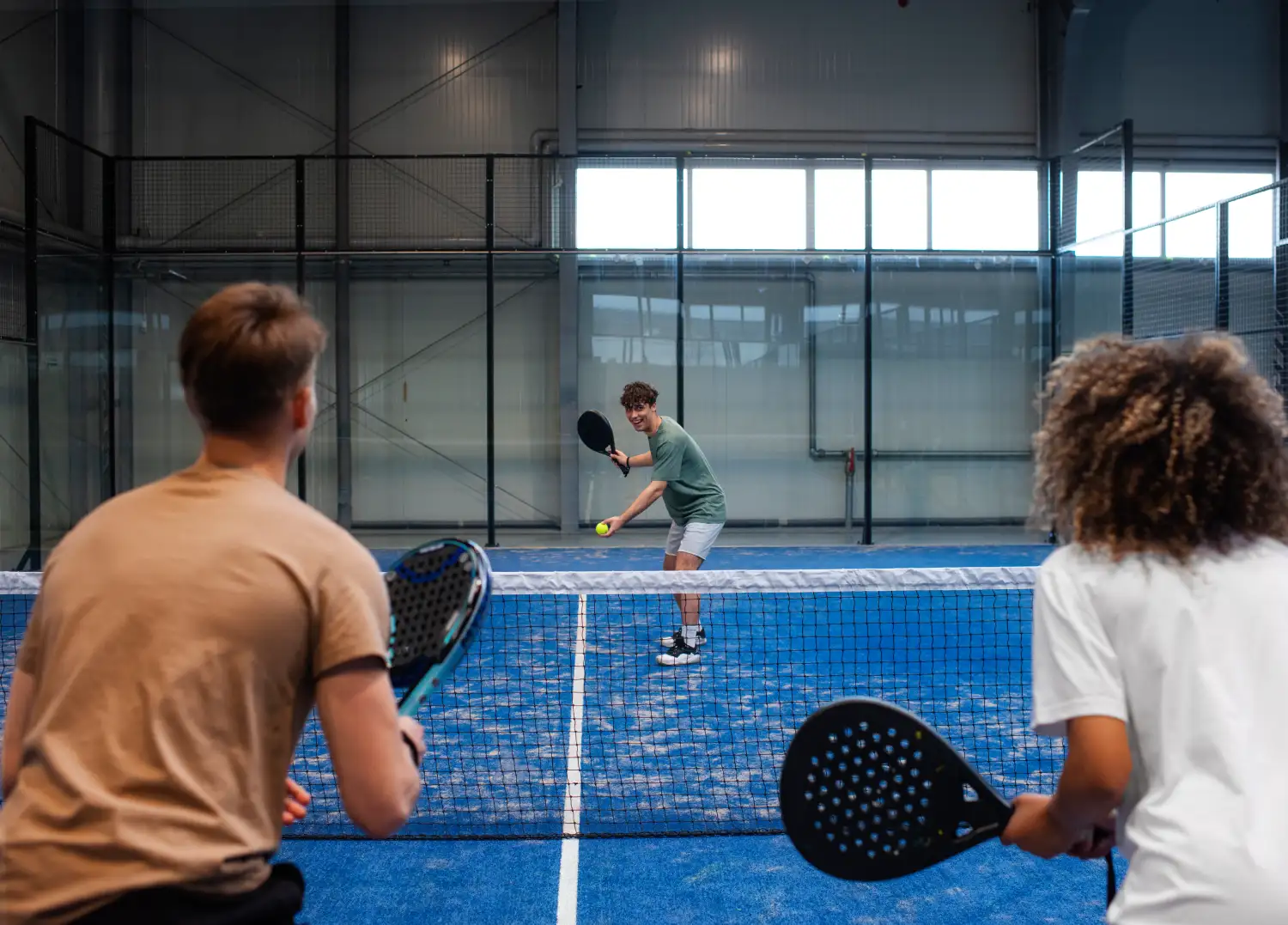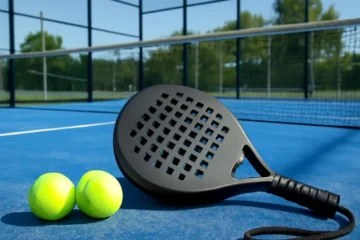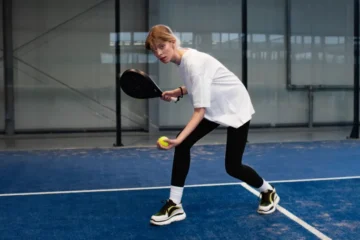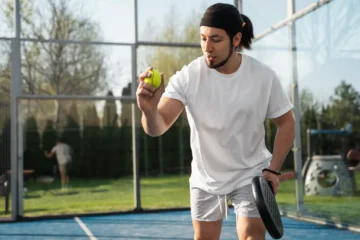Padel, a thrilling sport that blends elements of tennis and squash, demands quick reflexes, precise positioning, and strategic thinking. One of the key skills that separate good padel players from great ones is anticipation—the ability to read your opponent’s movements and predict their next shot before it happens. Mastering anticipation can lead to faster reactions, better positioning, and ultimately, more wins on the court. In this article, we will break down the art of anticipation into actionable steps, helping you sharpen this critical skill and gain a competitive advantage.
Introduction: The Secret Weapon of Top Padel Players
Have you ever found yourself feeling like your opponents are always one step ahead on the padel court? They seem to react to your shots before you even hit them, getting into position effortlessly and making you feel like you’re playing catch-up. The truth is, top padel players don’t have magical reflexes; they’ve simply mastered the skill of anticipation.
Anticipation isn’t about guessing or blindly reacting to the ball. It’s about reading the cues your opponent gives you and understanding the probabilities of what’s likely to happen next. By honing this skill, you can anticipate your opponent’s shots and position yourself in the best possible place to counter their every move. In this article, we will guide you through the fundamentals of anticipation in padel, giving you the tools to start reading the game like a pro.
Part 1: The Foundation – Reading Your Opponent’s Body
Before the ball is even hit, your opponent’s body language can tell you a lot about where the ball is likely to go. By learning how to observe these subtle cues, you’ll be able to make more accurate predictions and position yourself effectively.
1.1. The Shoulders and Torso: The Ultimate Tell
The position of your opponent’s shoulders and torso is one of the clearest indicators of where the ball will go. Watch carefully for these signs:
- Open Shoulders: When your opponent’s shoulders are open, it’s a clear signal that they will likely hit a cross-court shot. For instance, if a right-handed player’s shoulders are open to the left, they are setting up to strike the ball toward the left side of the court.
- Closed Shoulders: On the other hand, if their shoulders are more closed, it suggests they are preparing for a down-the-line shot.
By paying attention to the angle of their torso, you can predict the general direction of their shot. This is one of the most reliable methods for anticipating where the ball is headed.
1.2. The Gaze and Head Position: Where They Look
The eyes don’t lie. Players often subconsciously look where they plan to hit the ball. A brief glance toward a specific area of the court can be a powerful clue. For example:
- A Quick Glance: If your opponent glances at a gap in your defense or a specific area of the court, they may be preparing to target that area with a winner.
- Focused Gaze: If they are fixated on a specific shot, such as a down-the-line winner or an aggressive volley, it will often be reflected in their gaze.
By training yourself to read your opponent’s gaze, you’ll have a better idea of their intentions before the shot is made.
1.3. The Racket Preparation: The Tool Itself
The way your opponent prepares their racket can give you important clues about the type of shot they intend to hit. The following preparation signals can help you predict their next move:
- High Backswing: A high backswing typically signals a powerful shot, such as a bandeja, a smash, or a lob.
- Low-to-High Swing Path: A low-to-high swing suggests a shot with lift or a lob.
- Sideways (Pan-Cake) Grip: A pan-cake grip usually indicates a vibora or a spin-oriented shot, which often dips or curves.
By reading the racket preparation, you can anticipate the speed, direction, and spin of your opponent’s shot.
1.4. Footwork and Positioning: Where They Are on the Court
Your opponent’s position on the court can offer insights into the type of shot they are likely to attempt. Pay attention to their footwork:
- Wide Position: If a player is pulled wide off the court, they are usually limited in their shot options. Expect a cross-court recovery or a lob to follow.
- Close to the Net: A player positioned near the net is in a more aggressive position and will likely go for a winner, drop shot, or an angled volley.
By observing your opponent’s positioning, you can predict their next move and adjust your own positioning accordingly.
Part 2: The Context – Understanding the “Why” Behind the Shot
While physical cues are essential, the context of the game plays a crucial role in shot selection. Understanding the psychological and strategic factors at play will further enhance your ability to anticipate your opponent’s moves.
2.1. The Score: The Psychological Pressure
The score can significantly influence your opponent’s decision-making. Consider the following:
- Crucial Points (e.g., 30-40): During high-pressure moments, players are more likely to choose safer, higher-percentage shots. They might avoid risky winners in favor of more controlled, defensive play.
- Comfortable Lead: If your opponent is leading by a comfortable margin, they may become more aggressive, attempting riskier winners or drop shots to close out the game quickly.
By considering the score, you can predict whether your opponent is more likely to go for a safe or risky shot, allowing you to prepare accordingly.
2.2. Your Opponent’s Habits and Weaknesses
Every player has habits and weaknesses that can be exploited. Pay attention to patterns in your opponent’s game:
- Returning Lobs: Does your opponent often return lobs with a bandeja? Knowing this, you can prepare for that specific shot when they’re in a defensive position.
- Forehand Preference: If your opponent favors their forehand, they might favor a forehand-driven shot rather than using their backhand.
By recognizing these tendencies, you can anticipate their next move and position yourself to exploit their weaknesses.
2.3. Your Own Positioning and Shot Selection
Your own positioning and shot selection can also influence how your opponent will respond. Here are some scenarios to consider:
- At the Net: If you are positioned at the net, anticipate a lob over your head, and be ready to jump for a high volley.
- Weak Shots: If you’ve hit a weak, short ball, expect your opponent to attack with an aggressive shot or a drop shot.
Your shot selection dictates their likely response, so always be mindful of the game’s flow.
Part 3: Putting It All Together – A Practical Framework
Now that you understand the key concepts of anticipation, it’s time to put them into practice. Here’s a structured framework to help you anticipate shots like a pro.
3.1. The “Scanning” Habit: Don’t Just Watch the Ball
Effective anticipation begins with actively scanning the court. Don’t just watch the ball; observe your opponent’s body language and positioning. During points and even between them, take note of the following:
- Where is my partner?
- Where are the opponents?
- What is their body shape?
By developing this scanning habit, you’ll constantly gather valuable information to help you read the game.
3.2. The Split-Step: The Physical Key to Reaction
Anticipation is essential, but it’s worthless without the ability to react quickly. The split-step is the foundation of quick reactions. This small hop just before your opponent hits the ball allows you to be in the optimal position to move in any direction.
By mastering the split-step, you’ll be able to explode in the direction of the shot you’ve anticipated, increasing your chances of making the right play.
3.3. Drills to Improve Your Anticipation
To improve your anticipation, you need to practice in game-like situations. Here are some drills to help you develop your skills:
- Drill 1: Shadow Play. Practice with a partner, where you call out the shot direction based on their body preparation before they hit the ball. This helps you get in tune with the cues that signal different shots.
- Drill 2: Conditioned Games. Set up a game where you are only allowed to hit certain shots, such as lobs or volleys. By narrowing your shot options, you’ll learn how to recognize patterns in your opponent’s responses.
- Drill 3: Video Analysis. Watch professional padel matches and pause the video just before a player strikes the ball. Try to predict their shot based on the cues you’ve learned. This will sharpen your observational skills.
Part 4: Common Anticipation Mistakes to Avoid
While anticipation is a powerful tool, it’s easy to make mistakes that can backfire. Here are some common pitfalls to avoid:
4.1. Telegraphing Your Own Shots
Be aware that your opponents are trying to read you, too. If you telegraph your shot by over-exaggerating your body movements, they’ll have a better chance of anticipating your next move. Keep your shot selection and movements unpredictable.
4.2. Over-Committing
Anticipation is about probabilities, not certainties. Don’t over-commit to a shot too early and risk missing the ball or being caught out of position. Be ready to adjust if your anticipation is wrong.
4.3. Ignoring the Obvious
Sometimes the most obvious shot is the most likely one. Don’t overthink it—if your opponent’s body and positioning suggest a cross-court shot, trust that it’s the most probable outcome.
FAQs: How to Anticipate Your Opponent’s Shots in Padel
1. What is anticipation in padel?
Anticipation in padel is the ability to predict your opponent’s next shot before it happens. It involves reading their body language, positioning, and understanding game situations to make faster and more accurate decisions on the court.
2. How can I improve my anticipation skills in padel?
Improving your anticipation skills involves observing your opponent’s body language, such as their shoulder position, racket preparation, and footwork. You can also improve by analyzing game situations, watching professional matches, and practicing specific drills like shadow play and conditioned games.
3. What are some common signs I should look for when anticipating a shot?
Key signs to look for include:
- Shoulder position: Open shoulders suggest a cross-court shot, while closed shoulders indicate a down-the-line shot.
- Racket preparation: A high backswing signals a powerful shot like a smash, while a low-to-high swing suggests a lob.
- Footwork: A player’s positioning on the court indicates whether they’re likely to hit a winner or a defensive shot.
4. How does the score affect anticipation in padel?
The score can influence shot selection. When the score is tight, players tend to make safer, high-percentage shots. When ahead, they may take more risks, going for aggressive winners or drop shots. By understanding the psychological pressure of the score, you can better anticipate your opponent’s strategy.
5. Can I anticipate my opponent’s shot based on their habits?
Yes, every player has tendencies that can be exploited. If you notice that your opponent always returns a lob with a bandeja or favors their forehand, you can predict these shots and position yourself accordingly.
6. What role does positioning play in anticipation?
Your positioning on the court can greatly impact your ability to anticipate shots. If you’re at the net, be prepared for lobs. If you’ve hit a weak, short ball, anticipate an aggressive attack. Your own shot selection and positioning can influence how your opponent responds.
7. How important is the split-step in anticipation?
The split-step is essential for reacting quickly to your opponent’s shot. It’s a small hop that allows you to prepare for movement in any direction, making your anticipation more effective and giving you a better chance to reach the ball.
8. What are some drills to practice anticipation in padel?
Effective drills include:
- Shadow Play: Partner with someone and call out the direction of their shot based on their body preparation.
- Conditioned Games: Play with restrictions, like only hitting lobs or volleys, to learn patterns in your opponent’s play.
- Video Analysis: Watch professional padel matches, pause before the shot, and predict the direction based on body language and positioning.
9. What mistakes should I avoid when trying to anticipate shots?
- Telegraphing your own shots: Be mindful of how you position your body to avoid giving away your next move.
- Over-committing: Don’t rush to anticipate a shot. Allow yourself time to adjust if your prediction is wrong.
- Ignoring the obvious: Sometimes, the most probable shot is the one your opponent will take, so don’t overthink it.
10. How does anticipation help my overall padel game?
Anticipation improves your positioning, reaction time, and decision-making, giving you the ability to stay one step ahead of your opponent. This leads to better shot placement, fewer errors, and ultimately more wins on the court.




